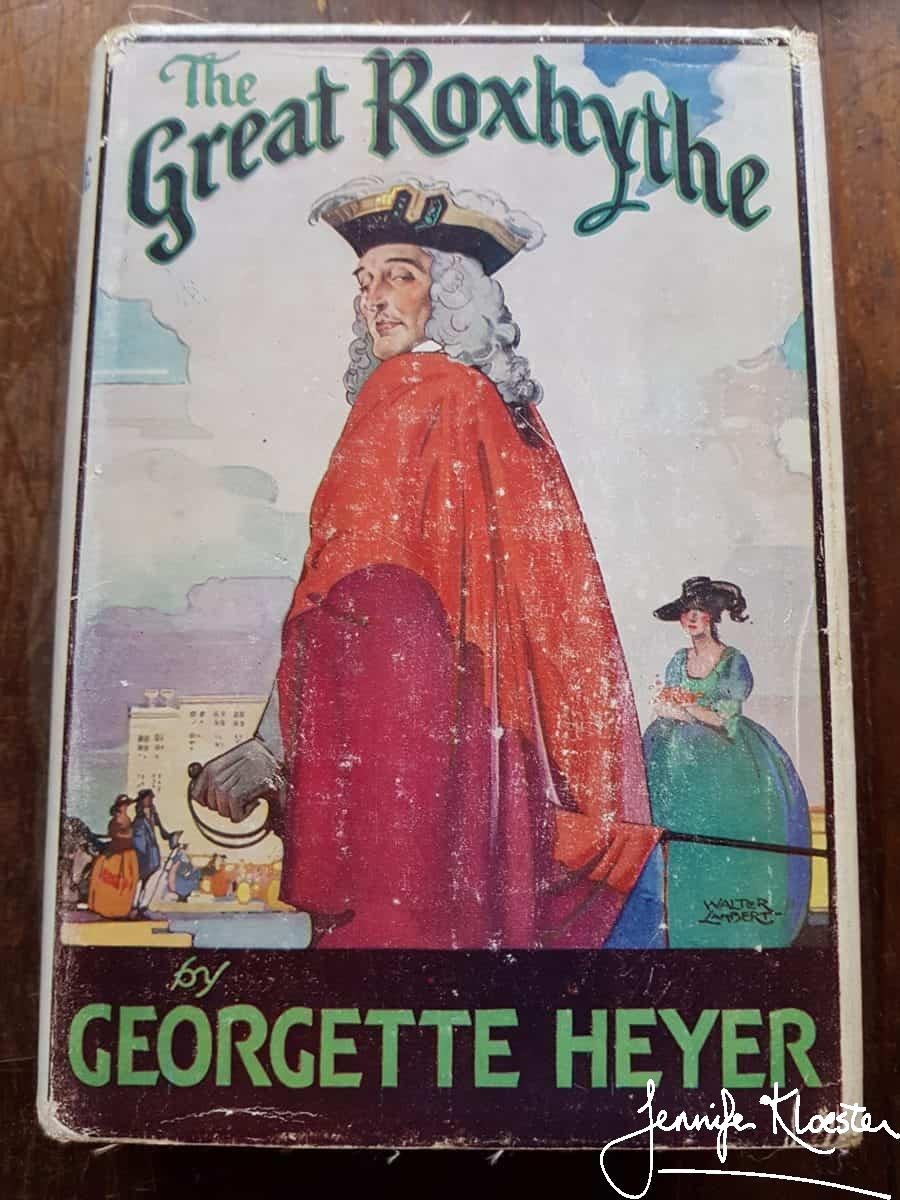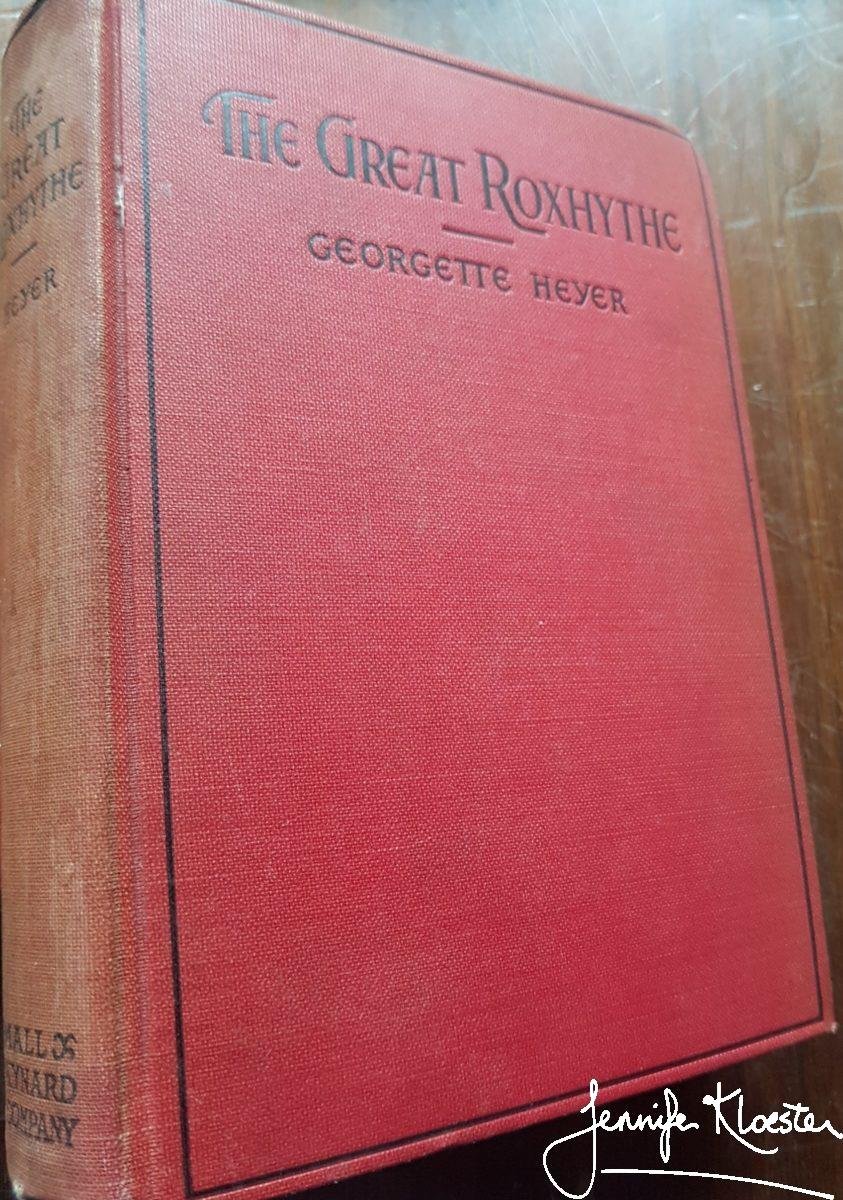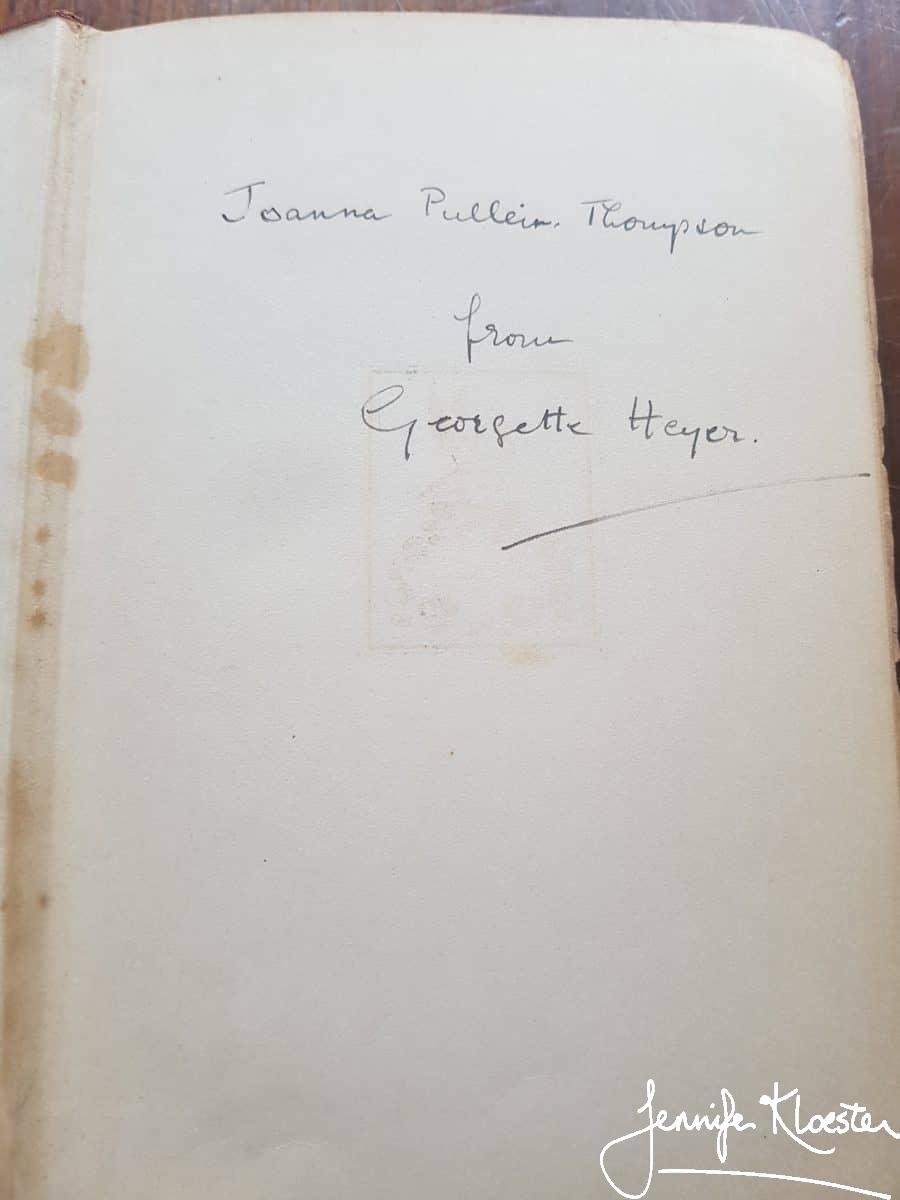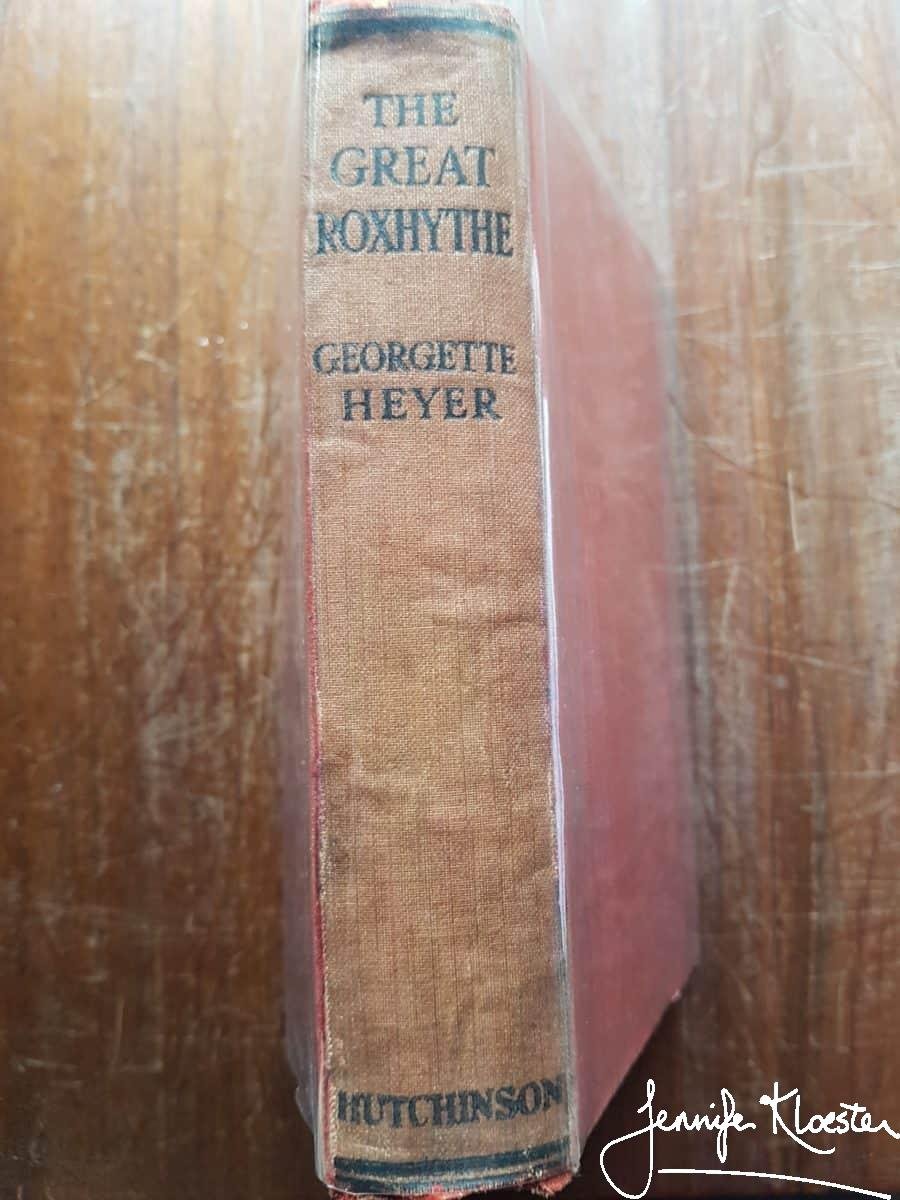Georgette Heyer’s second novel
Originally published in November 1922 , The Great Roxhythe was Georgette Heyer’s second novel and her first book for her new publisher, Hutchinson. Very different from her first book The Black Moth – a lively, romantic adventure published by Constable the previous year – The Great Roxhythe was Heyer’s first attempt at a more serious historical story. Set during the reign of King Charles II after the Restoration, the story begins in 1670 and navigates the historical maze of the next ten years of wars, treaties and political intrigue between England, France and Holland. Central to all of this is ‘the King’s favourite’, Heyer’s main character, the fictional Marquis of Roxhythe whom the King calls “Davy”. It is Roxhythe who dominates the novel:
‘He was the perfect courtier, combining grace and insolence even more successfully than His Grace of Buckingham. His bow was incomparable; his air French; his wit spicy; his tailoring beyond words remarkable. He was said to be fabulously wealthy, even in those days of splendour and unlimited extravagance. All this alone was enough to gain him popularity, but yet another asset did he possess. This was the ear of the King.’
The Great Roxhythe 1922 p.12.
The Marquis of Roxhythe
Like the Duke of Andover in The Black Moth, Roxhythe is another forerunner to the elegant, imperturbable men of fashion who would eventually populate Heyer’s Regency novels. The Marquis of Roxhythe is a commanding figure – ‘the King’s favourite and the ladies’ darling, and his name was on many lips.’ So ends the first paragraph of the 1929 Heinemann reprint – a very different opening from the original 1922 Hutchinson edition. In its earliest incarnation The Great Roxhythe had a Contents page and an opening chapter entitled ‘The King and His Brother’, in which Charles II and his brother James, Duke of York (later James II) discuss King Louis of France, the treaty with Holland, and James’s fervent desire to see Catholicism restored to England. In the 1929 Heinemann reprint this chapter has been expunged and Georgette has written a new opening for Chapter Two: ‘The King and His Favourite’ and rearranged several of the chapter’s original opening paragraphs. Thus it is Roxhythe and not Charles II who holds the stage from the beginning of the revised novel.

The 1929 Heinemann reprint. 
The 1922 first edition had a table of contents. The 1929 reprint did not
Only nineteen
Lovers of Georgette Heyer’s Georgian and Regency novels will find that The Great Roxhythe makes for very different reading but I think it is worth reading at least once. One good reason to read The Great Roxhythe is for what it tells us of the youthful Georgette. She was only nineteen when she wrote the book and, for all its faults, it remains an engaging and readable story. The Great Roxhythe would be an ambitious book for any author, but for a teenager it is a genuine achievement. Heyer reveals a level of perception not common in adolescents but which is evinced in sentences like: ‘When men murmur, it is but a short step to shouting, and from shouting it is an even shorter step to rebellion’ and ‘It is a game, Christopher, called politics.’ Throughout, the novel strongly reflects Heyer’s innate intelligence, love of history and ear for dialogue.
An Unusual Novel
In the Heyer canon, The Great Roxhythe is unusual both in its historical breadth, and detailed depiction of so many historical figures but it also stands alone as the only one of Heyer’s many novels that has no central romance. Roxhythe is an enigmatic figure, with several female friends but Heyer does not give him the kind of romantic attachment that would give her readers such pleasure in later books. In The Great Roxhythe the greatest love is that which Roxhythe has for his charming but reckless King, while Roxhythe’s young secretary nurses a heartfelt, yet naive love for his enigmatic employer. These relationships are an important part of what drives the story but to the modern reader unfamiliar with the nature of sixteenth-century courtly love they may seem strange and at times uncomfortable.
Literary Aspirations
The Great Roxhythe also reveals something of Georgette Heyer’s literary aspirations. Throughout her life, and despite her immense success, Georgette Heyer would be forever plagued by the idea that she should ‘write a serious novel’ (aka a ‘worthy’ novel). In some ways and perhaps ironically, her second book, The Great Roxhythe, is the closest she ever came to fulfilling that ambition, though it was a novel that would deeply disappoint her. Even before the reviews appeared Heyer had already decided that she did not like The Great Roxhythe. She inscribed her own first-edition copy of the book with these telling words: “This Immature, ill-fated work.” Towards the end of her life Heyer wrote to an American fan in answer to a query about Roxhythe, explaining that, ‘This very jejune work, written when I was nineteen (and just the kind of book you’d expect from an over-ambitious teenager!) was withdrawn, at my own urgent request from circulation years ago.’

Published on both sides of the Atlantic
Published by Hutchinson in the UK in November 1922 and by Small Maynard in the USA in June 1923,The Great Roxhythe was reviewed on both sides of the Atlantic with lengthy reviews in The New York Times Book Review and The Boston Evening Transcript and shorter ones in The Times Literary Supplement and The Springfield Republican. The novel was moderately well-received with some encouraging praise for Heyer’s picture of Charles II and others:
Charles ‘stands out rather more clearly drawn than is usual’
‘There are in the book a number of clever sketches of men and women; most notable, perhaps, the portrait of the Prince of Orange’
Thanks to her neat dialogue, Miss Heyer succeeds in making [Roxhythe] and entertaining specimen of his class…’
The Boston Evening Transcript; The New York Times Book Review; The Times Literary Supplement
But she also received some strong criticism.
‘it suffers somewhat from having too large a canvas, and from a certain monotony in the telling. .. the book is very much too long; there is a great deal of repetition, many incidents and conversations which do little to develop character, while of story there is almost none.’
‘She has been afraid to be too serious, and her intrigues become little more than a single figure, talking most of the time with such elegant inscrutability that the reader, just as much as any of those whom he wishes to deceive, is left puzzled as to what he is about.’
The New York Times Book Review 24 June 1923, p.17 & The Times Literary Supplement 14 December 1922
Small Maynard, an excellent US publisher

The American first edition published by Small Maynard in 1923 
The American first edition signed by Georgette to her friend Joanna Pullein-Thompson (nee Cannan)
Suppression
It is hard to imagine the effect of these critiques on the young Heyer. She had achieved a genuine success with her first book; her career was just beginning and she had only recently turned twenty when The Great Roxhythe was published. Despite having inscribed her personal copy with an acknowledgement of its apparent failure, she must have been disappointed – if not deeply affected – by the reviewers’ comments. Of course, this did not stop the book from selling. Heinemann alone reprinted it five times between 1929 and 1935. In the late 1930s, however, Heyer asked that the novel be suppressed. Heinemann agreed, but in 1951, Heinemann, apparently oblivious to her request (or perhaps deliberately ignoring it) reissued The Great Roxhythe as part of its Uniform Edition of Georgette Heyer novels. Heyer was appalled when she learned of their intention and immediately wrote to her close friend and publisher, A. S. Frere, begging him not to republish The Great Roxhythe.

‘Please, Perlease don’t do this!’
When I returned DUPLICATE DEATH to Mr Oliver, I asked him for copies of what I took to be the Uniform Edition of several of my back numbers, having observed that they figured handsomely on the latest royalty statement, and not having seen them in their new dresses. Today I received from him THE [RELUCTANT] WIDOW and the MASQUERADERS, together with a letter, telling me that “we are having prepared…THE CORINTHIAN, SIMON THE COLDHEART, THE BLACK MOTH, and THE GREAT ROXHYTHE.
PLEASE, PERLEASE don’t do this! I thought we were agreed that, with the exception of the SHADES, over which I have no control, everything prior to the MASQUERADERS should be allowed to sink into decent oblivion. CORINTHIAN, yes. The other three, ten thousand times, NO! why on earth have you chosen to do these lethal and immature works when the CONVENIENT MARRIAGE, TALISMAN RING, ROYAL ESCAPE, and PENHALLOW still await attention? When these are on the market again, I should prefer to see them reissued rather than those childish and utterly frightful books put out again. Include in this category, if you please, POWDER AND PATCH!
I hope so much that it may not be too late to stop this. It will embitter my life!
Georgette Heyer to A.S Frere, letter, Frere Archive, 12 April 1951
The best and the worst
To her great regret and lasting chagrin, publication of the Uniform edition of The Great Roxhythe went ahead. Today, Heyer’s second novel tends to polarise readers. In her 1984 biography, The Private World of Georgette Heyer, Jane Aiken Hodge described The Great Roxhythe as ‘probably the worst book Georgette Heyer ever wrote’, whereas an online reviewer declared it ‘The very BEST of Heyer’ explaining that, ‘It veers away from the usual light-hearted, unrealistic romances and plunges into the politics and intrigue of the age of Charles II, and it deals with the relationships between men and women in a less sentimental (and more realistic) manner. Slow, complex and mature.’
Another reader said that it was not up to Heyer’s ‘usual standards’ – a comment which should perhaps remind us that The Great Roxhythe was only her second novel and in 1922 Georgette Heyer did not yet have a ‘standard’.







8 thoughts on “The Great Roxhythe 1922 & 1929”
I’ve just finished reading “The Great Roxhythe” and I very much enjoyed it. It was certainly a change from this usual topics of GH, but it was fascinating and engaging- I read it through in 2 very late nights. It’s my first “new” GH in many years, and I was thrilled to find another book from her that pulled me into staying up too late because the book is so good.
Hi Teresa
I’m so glad you enjoyed it. I know some readers are not keen on Roxhythe but I think it’s a remarkable achievement, especially when you think that Georgette was only nineteen when she wrote it! It was a marked change from her first novel but she pulls it off very well, I think. Isn’t it amazing how she’s able to keep you reading late into the night?!! Thanks for posting.
At last, a “NEW ” Georgette Heyer….I could not put it down. and yet there was no romance as such.
But a wonderful study of feelings between man and man, man and women. I cried at the poignant ending. It is unbelievable that Georgette Heyer was only 19 year old.
I’m so glad you enjoyed it, Deviyanee. Thank you for commenting. It is incredible that she wrote it when she was only 19. Such a readable novel and she really brings the characters to life. I’m so glad you found this “new” Heyer and was so moved by its ending.
Hi Jen,
I’m just listening to the new audible narration of the book and I am intrigued by your description of the lost first chapter. I feel like it would give a good canvas for the rest of the story to sit on. I know very little about Charles II and the various historical forces around him.
Have you any idea where it could be found?
Many thanks,
D
I am curious about a reference to Roxhythe “amusing himself either at Whitehall or at the Louvre”, following his return to London from Holland. I don’t believe Heyer was suggesting that he was flitting backwards and forwards between London and Paris, so what could she have meant by the Louvre in London?
I have to recant. Reading further, it is apparent that Roxhythe did flit backwards and forwards between London and Paris.
A very belated reply due to website issues but thank you for posting Jean and for taking the time to ‘recant’ 😀 Roxhythe is such an interesting novel and a remarkable achievement for a 19 year-old! I’ve always been sorry that she came to dislike it so much that she suppressed it. Thanks again, Jen